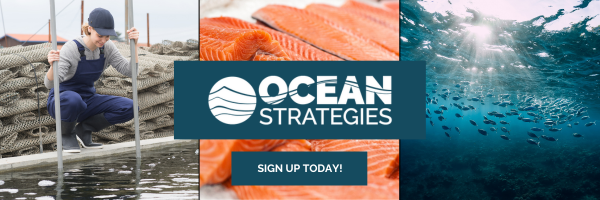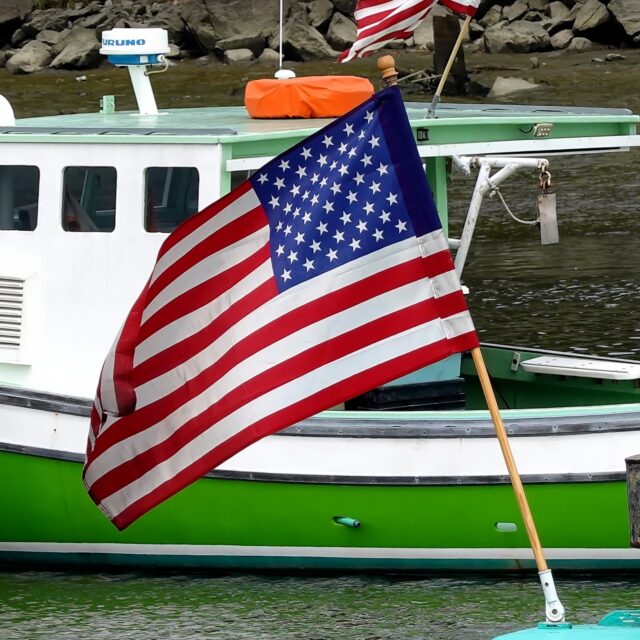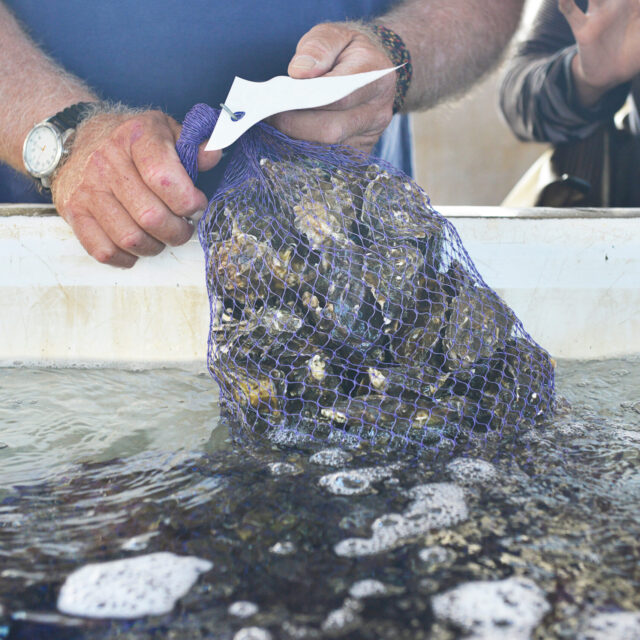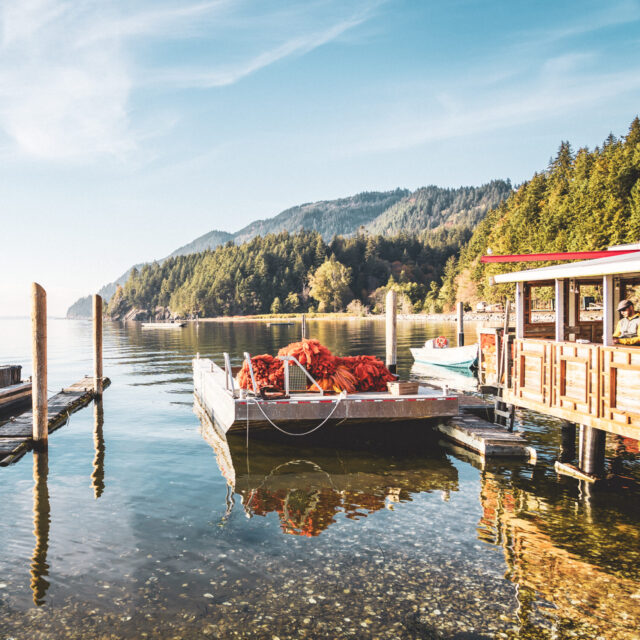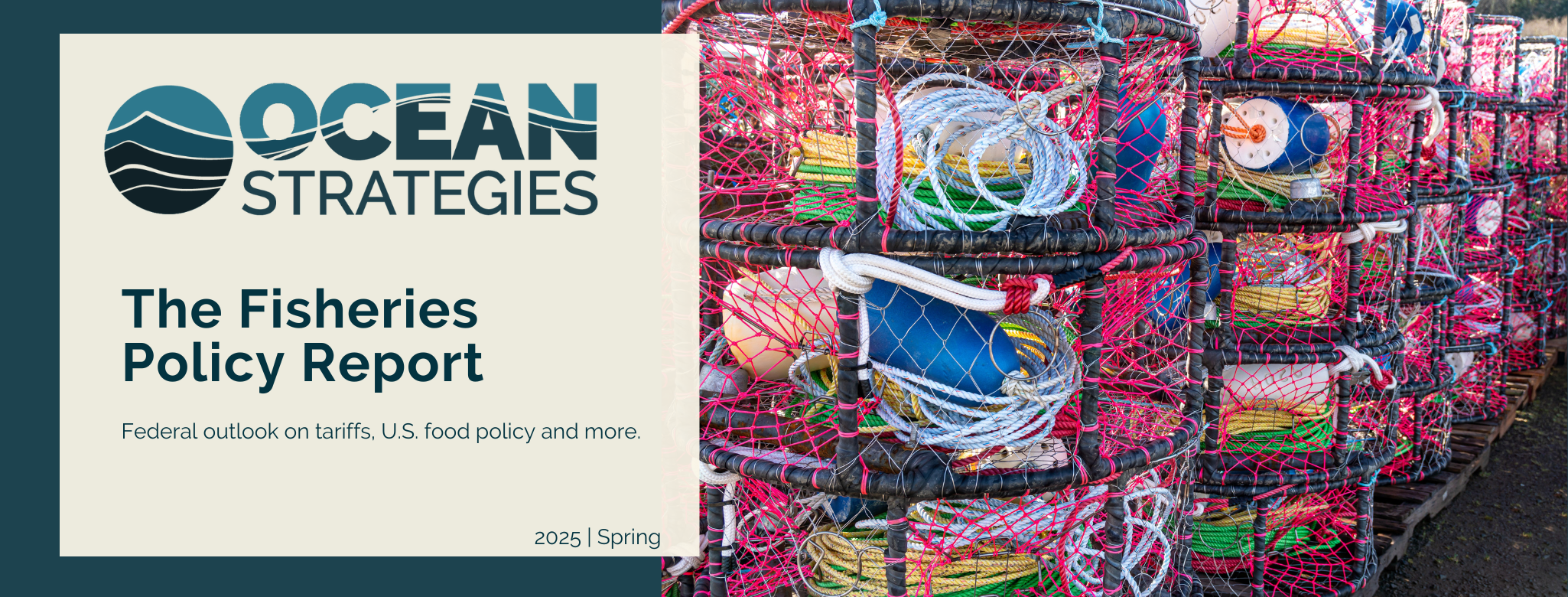
Ocean Strategies is a public affairs firm specializing in seafood, fisheries and marine resources.
This report provides policy and industry updates for those who rely on access to sustainable U.S. seafood. Sign up here.
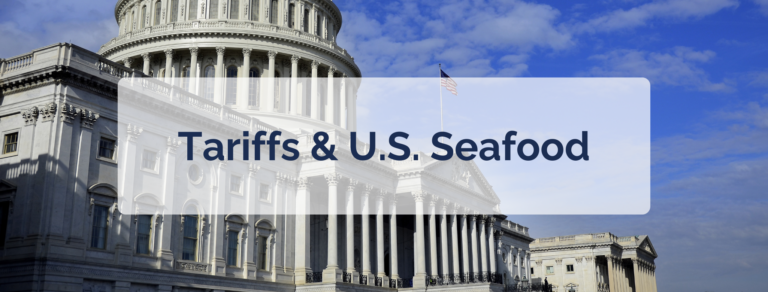
For commercial fisheries, tariffs offer a mixed bag
As the global markets shuffle up and down with swings of tariff negotiations, some commercial fishing groups stand to win marketshare if overseas products are expected to enter the domestic market with duties that bring them closer to par with American products.
In early April, the administration announced sweeping tariffs on all imports, then pulled back to a 10 percent baseline — except 125 percent for Chinese goods — for a 90-day period, during which negotiations may take place with other trade partners.
One clear winner in the tariff do-si-do is wild domestic shrimp, especially from the Gulf and Southeast coasts. Cheaper farmed imports have long been subbing for local and wild products.Wild American shrimp are harvested with strict regulations, more expensive labor and, therefore, a higher price tag.
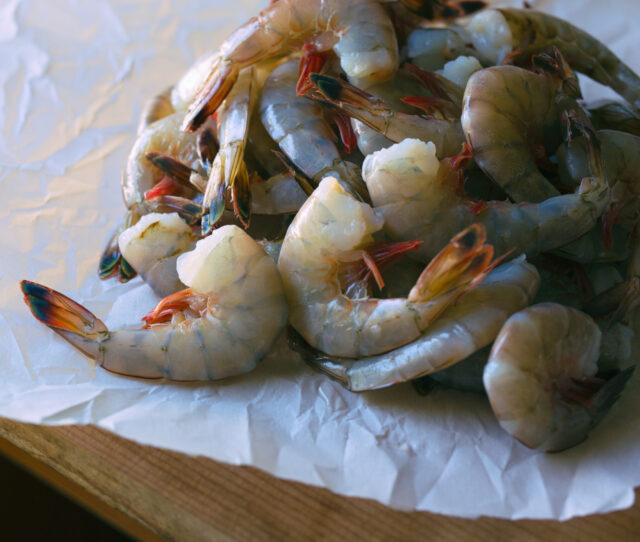 Used intentionally, tariffs can be a critical lever to pull in leveling the playing field when it comes to highly regulated industries that compete with cheaper, less regulated imports, or even in some cases in competition with well-regulated industries that are heavily subsidized by their own governments.
Used intentionally, tariffs can be a critical lever to pull in leveling the playing field when it comes to highly regulated industries that compete with cheaper, less regulated imports, or even in some cases in competition with well-regulated industries that are heavily subsidized by their own governments.
For example, the primary objective of the Saltonstall-Kennedy Act is to use import duties on foreign marine products to help promote and develop U.S. fisheries for the benefit of “fishing communities,” defined by the S-K program as “harvesters, marketers, growers, processors, recreational fishermen, charter fishermen, subsistence fishermen, and persons providing them with goods and services.”
We have all heard the stat that more than 80 percent of our domestic seafood consumption consists of imports (and that the stat does not delineate our own products that we export for overseas processing and reimportation to the domestic market). If we had more funds for the S-K program, U.S. fishermen might have a better chance of selling their catch into competitive domestic markets, and we’d also be funding innovation for new products, processing technology and investment in infrastructure that helps fishing communities more broadly.
The act stipulates that 30 percent of the import duties of marine products should be used for promotion and development of U.S. fishery products, with 60 percent of those funds going to the S-K program, which is overseen by an industry-led committee. In recent decades, the overwhelming majority of the funds have been siphoned off to support NOAA’s Operations, Research, Facilities before they can be designated for the S-K program. While those are important activities for fishery management, they have nothing to do with the S-K program or with any promotion or marketing purposes.
In FY24, for example, $376.4 million was transferred to the “Promote and Develop” (P&D) account. Sixty percent of that is $225 million, which should have been designated for the S-K program. Instead, the program got less than 2 percent of those funds, and the other 98 percent supported NOAA operations.
Without key programs in place to direct tariff funds toward critical marine infrastructure, innovation, domestic processing, industry stakeholders are less likely to benefit from the import duties that will affect the overwhelming majority of the supply chain.
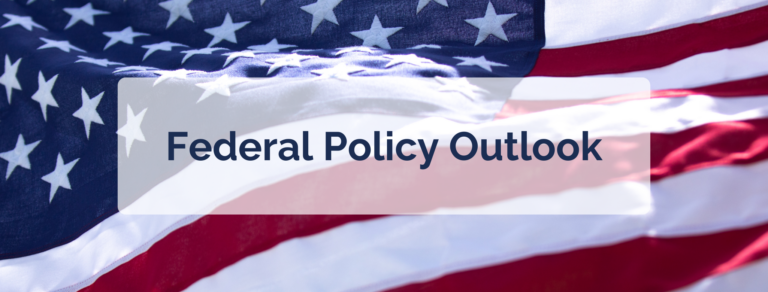
There is no shortage of speculation about the future of federal fishery regulation. In the meantime, there are a few principles that we can coalesce around. Three of them are laid out in NOAA’s National Seafood Strategy.
Seafood is Good for People
- Seafood is one of the best sources of nutrients essential for human health and well-being.
- It is also critical to providing food to a growing global population and is a foundational part of the identity of coastal communities.
Seafood is Good the Economy
- The U.S. harvests about 10 billion pounds of seafood annually with a dockside value of $6.3 billion.
- Domestic seafood is also an economic engine that supports 1.2 million jobs and generates $165 billion in sales across the broader economy.
Seafood is Good the Planet
- U.S. seafood harvested and grown responsibly, has a low carbon footprint and is increasingly a critical part of food systems.
The Restoring America’s Maritime Dominance executive order, released in early April, includes goals that aligns with the National Seafood Strategy by proposing to strengthen coastal economies, improve maritime infrastructure and expand workforce development as well as training.
At the same time, it’s critical for industry leaders to retain open communication channels with regulators during this time of transition and agency workforce reduction to ensure that America’s fishermen can make the appropriate business plans based on openings, closures and quotas occurring as expected.
That includes the importance of calling for emergency measures where necessary to streamline regulatory gaps, whether they are caused by the transition or by other factors.
The Northern Gulf of Maine scallop fleet closed for 10 days in mid-April because regulators were unable to confirm the quota.  The fleet had been fishing on a temporary default quota since regulators at the regional office and in D.C. were unable to finalize the annual catch limit by the typical deadline of April 1. That emergency quota was just over 315,000 pounds, less than half of the 675,563 pounds recommended by the New England Fishery Management Council in December.
The fleet had been fishing on a temporary default quota since regulators at the regional office and in D.C. were unable to finalize the annual catch limit by the typical deadline of April 1. That emergency quota was just over 315,000 pounds, less than half of the 675,563 pounds recommended by the New England Fishery Management Council in December.
Meanwhile, the fishery had been on the cusp of a banner year. Fishermen were getting $40 a pound ex vessel for large scallops — double the average of $20 per pound post-covid. That jump in value aligning with a sustained increase in quota has fishermen hesitant to leave quota on the table.
But time is of the essence for the fleet, which often travels to other ports for the season. And many of those same boats will soon start preparing for the summer lobster season.
[More detail in this story, prior to the official close, and after the reopening.]
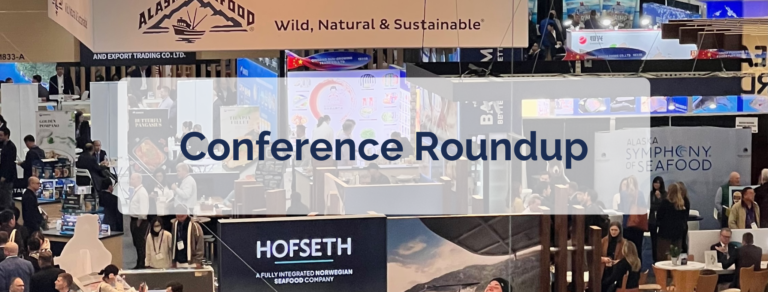
Boston Roundup: Seen at SENA
If you read our preview for SENA (the Boston Seafood Show), we hope you got a chance to use some of our tips for engagement at the show. (Please tag us if you posted them!)
Here’s what we nabbed for takeaways.
After listening to the keynote address, we were relieved (we think?) to gather that no one seems to know more than anyone else about what’s to come from the industry — and moreover the global economy — as we all stare into the abyss of uncertainty.
Some of the biggest questions were:
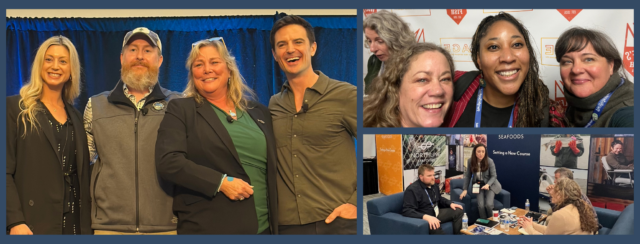
- Where has the supply chain recovered to pre-covid status?
- What will Asian markets offer for high-value U.S. products like geoduck, lobster and herring roe?
- Will our work be disrupted by changes in the federal sectors for oversight?
- Will there be opportunities to expand fisheries and seafood partnerships in other sectors as federal changes open new doors?
- What will be the price of [fill in the blank]? (This one is perennial.)
We also ate a LOT of seafood, from receptions to onsite tasting opportunities. Did you catch the bluefin tuna being portioned on the show floor?
Alaska Food Policy Conference
Food systems have been a big topic in seafood circles over the last few years, partly because we — fishermen and seafood businesses — haven’t always been great at plugging into them. We haven’t historically had access to the federal programs available to most U.S. food producers through the USDA, and we are often discussed as a stand-alone topic rather than a quintessential part of American food culture, food security, and nutrition.
It’s been a lift to get seafood elevated into the Farm Bill, and we’re still working on myriad ways to get more U.S. seafood to American plates, particularly within local food systems.
The Alaska Food Policy Council’s statewide conference last month gave us a prime example of that integration done right. Held in Kodiak, one of Alaska’s busiest commercial fishing ports and home to an increasing number of local growers and ranchers, the conference drew food professionals from Nome to Ketchikan. From wild fish and kelp, to Alaska-grown produce and livestock, the full spectrum of Alaska’s food production was well represented.
Some of the most exciting conversations for me highlighted the commonalities between seafood harvesters and our local farmers. We have shared challenges around local processing, permitting and marketing. We have common goals around local access to local food, and parallel challenges around building that localized system while remaining economically sustainable. It was clear that we haven’t yet found all the ways we can collaborate on solutions, but this dialogue was a great step in that direction.
Whether we’re talking about access to USDA programs, or building community space for value-added products (land and sea sourced), there is more opportunity in a shared food systems space than in silos.
What can you do? Look for these opportunities to build or expand relationships within food systems, and integrate seafood more fully into food dialogues.
- Does your town, state or region have any government or non-profit groups focused on food security, food production or nutrition? Is seafood a part of it?
- What foods is your region known for producing? Who are their community leaders, and do they have a relationship with their seafood counterparts?
- Is seafood represented at your local farmers markets, or other local food hubs or co-ops?
- Are there needs for food-focused infrastructure that could benefit both land and sea based harvesters? i.e. processing, cold storage, aggregation hubs, etc.
Maine Fishermen’s Forum
The biggest story coming out of the forum this year was the Maine Sea Grant funding cut, the news of which arrived in inboxes overnight on Friday, Feb. 28, before the last day of the show.
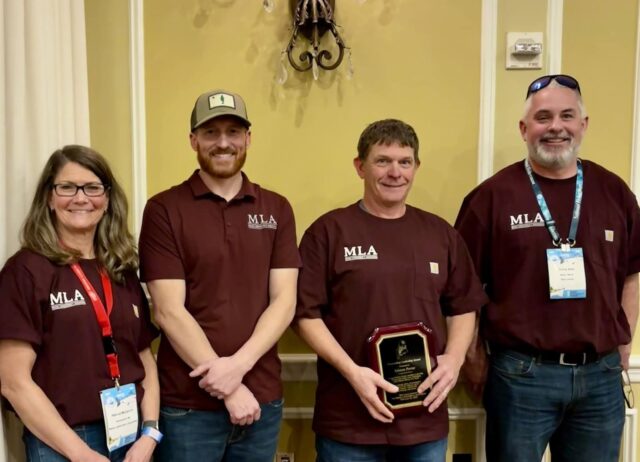
In the end, the timing felt like kismet. The industry was gathered to witness in real time what was happening with our trusted, long-time colleagues at Sea Grant. Unified, stakeholders rallied immediately to support a second look at cuts to the program’s federal funding of $1.5 million.
The Sea Grant booth at the show included documentation of the program’s success in turning its FY23 federal funding into a boon for Maine’s working waterfronts and coastal economies to the tune of $23.5 million. That means that for every dollar spent on Maine Sea Grant, the state’s coastal communities get the value of $15.60.
Before Saturday, the overall feeling at the show was that the New England fishing industry is struggling through some hard-fought battles with wind and whales, but overall the prospect is looking as strong as it could be.
This year the Maine Lobstermen’s Association inducted a slate of young fishermen to take the reins of leadership with Jarod Bray of South Thomaston, Maine, taking the helm as Chair, as the board bid farewell to Kristan Porter of Cutler.
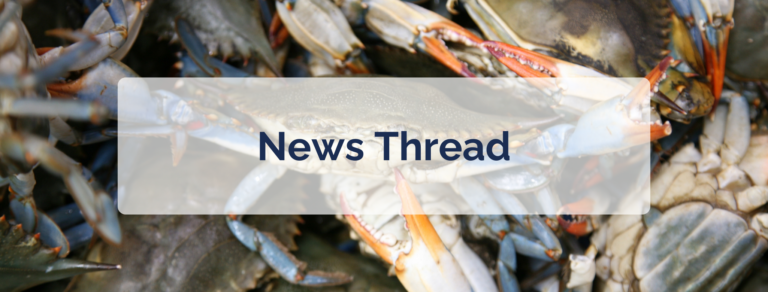
News Thread
- Workforce development within commercial fisheries is not a topic we will drop anytime soon. Seafood Source recently highlighted our recent Boston SENA panel where we brought together several colleagues to discuss how the U.S. seafood industry workforce is at an inflection point as barriers prevent new entrants.
- Eugenio Piñeiro Soler has been named Assistant Administrator for NOAA Fisheries. As Assistant Administrator, Mr. Piñeiro Soler will oversee the federal agency responsible for managing our nation’s marine fisheries and conserving protected marine species.
- The Polar Institute’s Taylor Holshauser challenges policymakers to make America’s fisheries competitive once again.
- NOAA’s mission and core functions are quite vital to the commercial fishing industry. Without oversight, safety, and research, there is no ability to open or close a season, define quotas or indeed – put a fish on a plate.
- The Alaska Mariculture Cluster and the Southeast Conference present a great model for industry collaboration. Their Joint Innovation Projects (JIP) program is a collection of 29 unique applied research and development projects designed to form strategic private sector partnerships, accelerate innovation, address barriers to growth, and promote Alaska’s emerging mariculture industry.
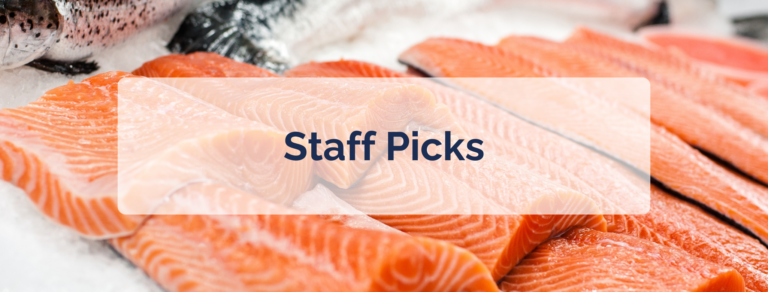
What We’re Taking In
Substacks abound
You may have noticed that online Substack subscriptions are offered on pretty much any subject you can name. Whose to say we might want to start one of our own here soon? At the moment these are three that we are closely following:
- The Quality Line explores the future of independent fishing—navigating the challenges and opportunities of modern commercial fishing with a focus on quality, value, and resilience in a changing seafood industry.
- Ocean Policy Insights is written by ESP Advisors and our friend Emily Patrolia. They share the inside scoop on all things U.S. ocean policy; including conversations in Congress, what’s up in the White House, and ocean updates from coast to coast.
- Fish Forward is written by another friend and industry colleague Jamie Goen, current Executive Director at the Alaska Bering Sea Crabbers trade group. Fish Forward is another collaborative effort featuring folks tied to the oceans and the seafood it provides, chefs making seafood approachable to buy and cook at home, and artists inspired by the sea.
Reading
All regions enjoy a good shellfish boil, often the sign of Spring, and twinkly-light-hued deck gatherings from coast to coast. If you have yet to read Heaven on the Half Shell, now might be just the right time and if you’re local to the Seattle-area, Washington Sea Grant is hosting a fun evening to highlight the book this week (details below).
Listening
“Balancing the Scales: The Business Case for Living Wages in Seafood” – where Aquademia / The Seafood Podcast folks and special guest Lisa van Wageningen, Program Manager for Aquaculture at IDH, break down the key difference between a living wage and a minimum wage.
Florida Chef Steve Phelps of Indigenous Restaurant on How to Be a Responsible Seafood Consumer –The Zest’s latest podcast has a new drop where Chef Steve shares why he is an aquaculture advocate, questions to ask when you dine out or buy seafood at the market, and more.
Cooking
Lobster boil, feel free to invite us!
We said it above but tis the brink of the season for outdoor gatherings and our friends coast to coast love a shellfish boil. Insert any regionally caught local shellfish for Chef Thomas Keller’s latest Classic Lobster Boil recipe.
Events & Opportunities
- April 15-17 – Comfish Alaska 2025, Kodiak, Alaska
- April 17, 5:30-8:00pm PST – Heaven on the Half Shell book discussion & tasting, Seattle, Washington
- April 23 deadline Young Fishermen’s Career Development Projects applications due.
- April 30 deadline Pacific Marine Expo’s Call for Speakers now open.
- May 6-8 – Seafood Expo Global, Barcelona, Spain
Here is a list of links to our most recent policy reports. You are always able to find them on our Ocean Pulse Blog. If you’d like to receive them directly, just sign up here.

